Bonnie Wood’s Guide to Area “ Birdy” Parks
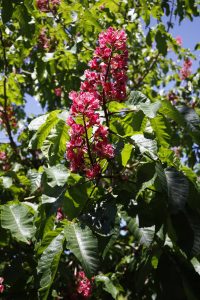 For more official information about the parks I discuss, see Olympia’s Parks web pages.
For more official information about the parks I discuss, see Olympia’s Parks web pages.
The greater Olympia area boasts several lovely parks and preserves, all good for birding. There are well-known sites, like Priest Point Park, McLane Creek, and Woodard Bay, but there are also smaller park gems, hidden in neighborhoods. One could view these as islands, or “pocket parks,” but many of these can be very “birdy”. If nothing else, they are small, lovely places to visit and explore, and one can enlarge one’s knowledge of Olympia’s neighborhoods. One doesn’t have to travel far or plan to be with a field trip group. It is no coincidence that most of these places have water to some degree; birds congregate near water sources during the dry season. I encourage you to scout these places when you have a free couple of hours at any season of the year—they will reward your effort. Often, when I travel through Olympia’s neighborhoods, I’m in a hurry. I’m going somewhere. I don’t have time to stop and smell those proverbial roses. I don’t have time to stop and figure out what bird is singing from the woods or shrubs I’m speeding by – even when I’m on my bicycle! This, then, is an exhortation to myself as well as to Black Hills Audubon members. Take an hour or so when you can to see what birds and other wildlife might be living among us in Olympia’s smaller, island, pocket parks. I mightily respect these birds’ and critters’ flexibility and adaptability, for we have radically disrupted their historical habitat. These pocket parks are a great chance to practice one’s birding-by-ear. Come spring, these parks will be noisy with birdsong. You can get to these parks by multiple means: walking, biking—easily accessible by bicycle, on dedicated bike lanes, bus, and auto.
F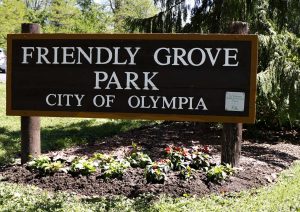 riendly Grove Park – 2316 Friendly Grove Road N.E. (map)
riendly Grove Park – 2316 Friendly Grove Road N.E. (map)
This park is about ½ mile beyond the Olympia Little Theater. I play tennis here often and always see one or more raptors soaring above this park: Bald Eagles, Turkey Vultures, Red-tailed Hawks, and Sharp-shinned Hawks watch from above for the birds and other critters enjoying the bordering trees, shrubs, and wetlands.
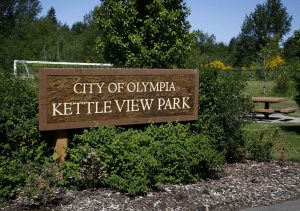 Kettle View Park – 1250 Eagle Bend Drive S.E. (map)
Kettle View Park – 1250 Eagle Bend Drive S.E. (map)
This park is on the property of the old Briggs Nursery and new Briggs development. Walking paths, both paved and graveled, border small wetlands and woodland. Songbirds abound.
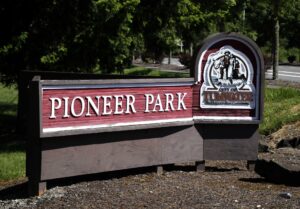 Pioneer Park -5801 Henderson Boulevard S.E.,Tumwater (webpage)
Pioneer Park -5801 Henderson Boulevard S.E.,Tumwater (webpage)
This park is at the bottom of the hill south from Yelm Highway. Graveled paths and mown grass paths loop and meander through the meadows and along the Deschutes River. There are marshy areas around the park’s sports fields. A walk around the entire park, including around the baseball fields to the north, is worth it. Previous summer sightings include numerous Common Yellowthroats and Yellow Warblers (resident). Cedar Waxwings and three species of swallows have been found feeding near the river. One of Black Hills’ expert birders reported hearing a Lazuli Bunting one summer.
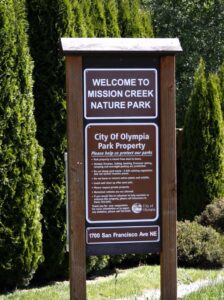 Mission Creek Park – 1700 San Francisco Avenue N.E. (map)
Mission Creek Park – 1700 San Francisco Avenue N.E. (map)
Located three blocks east of Roosevelt Elementary School at the headwaters of Mission Creek, this wooded park has gravel paths wending through it, to and from entrances from the surrounding neighborhood. It is excellent habitat for woodland birds. The neighborhoods around Mission Creek are also interesting and eclectic. There are community gardens, a Buddhist temple, and llamas in a small pasture nearby. There is the Olympia Little Theater and, of course, the San Francisco Street Bakery!
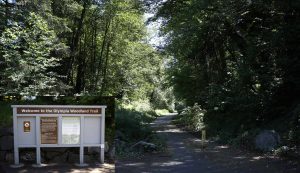 Olympia Woodland Trail (map)
Olympia Woodland Trail (map)
This paved bicycle and walking path connects to the Chehalis Western Trail and bicycle path that runs along Pacific Avenue. It opened in 2007. The main trailhead with parking is at the intersection of Eastside Street and Wheeler Avenue in Olympia, just after the overpass over I-5 if you are heading up the Eastside Street hill from downtown. Look for the shelter with the “living roof” planted with sedums on the left. Water is abundant along this paved path. It is delightfully cool on this path on hot summer days and delightfully woodsy any time of year. At places along the path there are more open, more meadowed areas, appealing to birds who like more open landscape. This is a great stretch of path to wander for warblers, sparrows, swallows, and other songbirds and for woodland birds of all kinds.
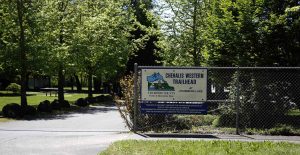 Chambers Lake Trailhead Park – 3725 14th Street SE
Chambers Lake Trailhead Park – 3725 14th Street SE
This park is owned by the City of Olympia. One can park, bike or walk from the Chambers Lake parking lot at 3725 14th St SE, then wander south on the Chehalis Western Trail. This stretch of trail between 14th Street and Lacey’s 45th Avenue SE is ridiculously rich with songbirds and passerines. One must explore here in the spring during migration or miss out. The warblers and sparrows are thick in the willow thickets on either side of the trail. One spring, for example, at the drainage ponds where 45th Avenue hits the Chehalis Western Trail, I saw a flock of dozens of Yellow-Rumped Warblers feeding over the ponds. I have also seen a Western Bluebird on this stretch of trail. In summer, in the meadow immediately to the south of Herman Road, I’ve seen Red-Tailed Hawks sitting in the meadow crying to each other, making a huge racket – three (or more?) of them were fledglings or juveniles, I assume.
Grass Lake Refuge, by Jim Lynch
(Grass Lake – City of Olympia Website)
Grass La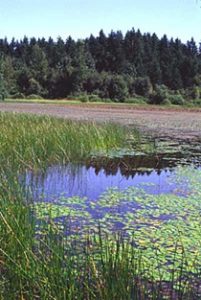 ke Refuge was acquired by the City of Olympia in 1989 after a heated battle between what is now Friends of Grass Lake and land developers who had already begun to plow their tractors into the area before receiving permission. Through persistence by Friends of Grass Lake, the refuge was acquired for 1.8 million dollars and is now approximately 165 acres of wetlands, coniferous forest, meadows as well as dozens of other microhabitats–both native and non-native. The area is home to over 200 species of plants and 98 species of birds. (Bird checklist) Grass Lake is a seasonal wetland which fills up in fall and winter, and almost completely empties during summer. The excess water from the three main bodies of water (Grass Lake East, Grass Lake West and Lake Louise) drain out into the Kaiser wetland and into Green Cove Creek which eventually empties into Puget Sound.
ke Refuge was acquired by the City of Olympia in 1989 after a heated battle between what is now Friends of Grass Lake and land developers who had already begun to plow their tractors into the area before receiving permission. Through persistence by Friends of Grass Lake, the refuge was acquired for 1.8 million dollars and is now approximately 165 acres of wetlands, coniferous forest, meadows as well as dozens of other microhabitats–both native and non-native. The area is home to over 200 species of plants and 98 species of birds. (Bird checklist) Grass Lake is a seasonal wetland which fills up in fall and winter, and almost completely empties during summer. The excess water from the three main bodies of water (Grass Lake East, Grass Lake West and Lake Louise) drain out into the Kaiser wetland and into Green Cove Creek which eventually empties into Puget Sound.
Directions
Grass Lake can be reached by taking Mud Bay Rd and turning north onto Kaiser Rd. The refuge is directly off Kaiser Rd and is designated only by a gated entrance with a “No unauthorized vehicles” sign and a sign asking to keep all pets on a leash. No bikes, motorbikes vehicles or unleashed pet are allowed in the refuge. (Map)
Natural History
Grass Lake Refuge contains a large diversity of plant species, some of which cannot be found in another single area in Thurston County Species such as Oregon White Oak, Oregon White Ash, Pacific Ninebark, Rattlesnake Plantain, Pacific Willow, Black Cottonwood, 4 types of Sedges (Carex), Western Trillium, and Fairy Slippers can be found in different areas of the refuge due to the wide variety of habitats. The large number of plant species offer diverse food sources for the birds. Grass Lake Refuge plays a key role for migrating birds, both for those that only stop for a few hours, as well as those who spend a couple of weeks there before moving on to other areas. Due to the level of water dropping off significantly in summer and early fall, shorebirds and waterfowl can be found on Lake Louise, which is the main lake directly off the Kaiser Rd entrance. Species such as Common Snipe, Hooded Merganser, Great Blue Heron, Red-tailed Hawk, Killdeer, Green-winged Teal, and Greater Yellowlegs are commonly seen before the lake fills up in mid to late fall. In the forest, many Spotted Towhees, Winter Wrens, Downy and Hairy Woodpeckers, Kinglet sp., and the occasional Bewick’s Wrens can be found. As the water level increases, numbers of wintering birds move into the lake and the shorebirds, no longer able to feed on the muddy lake bed, begin to leave. Pied-billed Grebes, Bufflehead, and American Coots are among the few to move into the lake first as well as Purple and House Finches in the brambles along the path to the lake.Grass Lake Refuge is an excellent Neotropical birding site, hosting Black-throated Greys, Wilson’s Warblers, Common Yellowthroats, Orange-crowned Warblers, Solitary Vireos, Yellow Warblers, Yellow-rumped Warblers, Swainson’s Thrushes, Barn Swallows, Violet-green Swallows, Tree Swallows, Western Tanangers and Black-headed Grossbeaks.
Billy Frank Jr. Nisqually National Wildlife Refuge: A Basic Guide by Phil Kelly
Nisqually Wildlife Refuge is a great place to spend a day, or a couple of hours. I’ve been leading a weekly bird walk at the refuge for 12 years now and here are some of my tips on how to get the most out of your visit.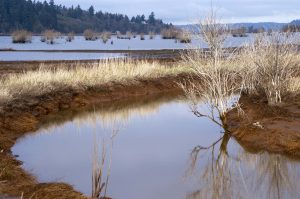 First off, understand that the refuge is managed differently at different times of the year. During the late Fall and Winter the refuge is managed for wintering waterfowl. That means flooding some of the fields and increasing the water levels in some of the ponds to facilitate waterfowl roosting and foraging. Upwards of 20 species of waterfowl are present on the refuge at this time of the year and flocks of shorebirds (mostly Dunlin) overwinter outside the dike. Birds of prey also increase on the refuge during this time of the year as food becomes more abundant and visible. Bald Eagles are always present and gather in good numbers in January and February along the Nisqually River to coincide with the salmon runs.
First off, understand that the refuge is managed differently at different times of the year. During the late Fall and Winter the refuge is managed for wintering waterfowl. That means flooding some of the fields and increasing the water levels in some of the ponds to facilitate waterfowl roosting and foraging. Upwards of 20 species of waterfowl are present on the refuge at this time of the year and flocks of shorebirds (mostly Dunlin) overwinter outside the dike. Birds of prey also increase on the refuge during this time of the year as food becomes more abundant and visible. Bald Eagles are always present and gather in good numbers in January and February along the Nisqually River to coincide with the salmon runs. 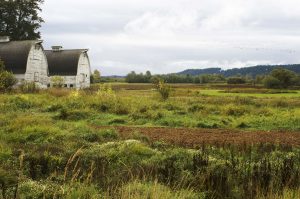 In the Spring and Summer, the refuge is managed for migrating passerines or songbirds. Water levels drop and grasses are allowed to grow up to shoulder height. Warblers, sparrows and thrushes are the stars of the show then. Look for males singing on territory April through early May in the riparian areas of the refuge. The twin barns loop is a good place to start for passerines. April and May are a good time to search outside the dike for migrating shorebirds where up to a dozen species may be seen. There are several ways to enjoy the refuge. I would start at the visitor center observation deck and check out the area there. There are usually a few waterfowl on the pond and the big fir tree behind the pond is often used as a roost by a raptor of some sort.
In the Spring and Summer, the refuge is managed for migrating passerines or songbirds. Water levels drop and grasses are allowed to grow up to shoulder height. Warblers, sparrows and thrushes are the stars of the show then. Look for males singing on territory April through early May in the riparian areas of the refuge. The twin barns loop is a good place to start for passerines. April and May are a good time to search outside the dike for migrating shorebirds where up to a dozen species may be seen. There are several ways to enjoy the refuge. I would start at the visitor center observation deck and check out the area there. There are usually a few waterfowl on the pond and the big fir tree behind the pond is often used as a roost by a raptor of some sort.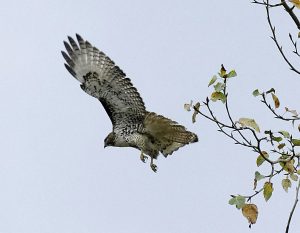 If time is short, walk the mile-long main boardwalk (the “twin barns loop”), which is wheelchair accessible. Check out the large pond, and a branch to the east accesses a riparian area. From late January through early March, a pair of Great Horned Owls with babies might be visible—look for the crowd of observers to find them. A side-trip to the twin barns observation deck gives a great view of the entire r
If time is short, walk the mile-long main boardwalk (the “twin barns loop”), which is wheelchair accessible. Check out the large pond, and a branch to the east accesses a riparian area. From late January through early March, a pair of Great Horned Owls with babies might be visible—look for the crowd of observers to find them. A side-trip to the twin barns observation deck gives a great view of the entire r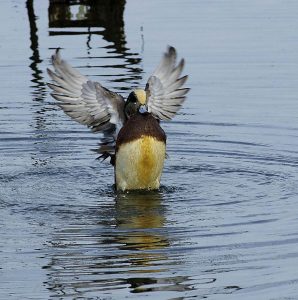 efuge—never know what you might see from there. If time permits, visit the orchard near the education center. It often holds a nice variety of woodpeckers, thrushes and sparrows. From the main boardwalk, you can access the dike trail, a gravel path leading westward to the estuary boardwalk. Going out to the estuary boardwalk and back makes the total walk about 2.5 miles and gives you good looks at the tidally influenced reclamation area and interior freshwater marsh. Again, what you see depends on the time of year and the tide. An incoming tide is best as it pushes the birds closer to the trail. If you have the time, add the mile-long estuary boardwalk, which follows McAllister Creek out toward Luhr Beach and has good views of the Sound. This increases your total distance to 4-5 miles or so. You can add a lot of species to your list that you won’t see in the interior of the refuge. Whatever you do enjoy your time on the refuge. The visitor center is open 9:00 AM to 4:00 PM Wednesday through Sunday. They have loaner binoculars and field guides and have passes for sale as well as a book store and gift shop.
efuge—never know what you might see from there. If time permits, visit the orchard near the education center. It often holds a nice variety of woodpeckers, thrushes and sparrows. From the main boardwalk, you can access the dike trail, a gravel path leading westward to the estuary boardwalk. Going out to the estuary boardwalk and back makes the total walk about 2.5 miles and gives you good looks at the tidally influenced reclamation area and interior freshwater marsh. Again, what you see depends on the time of year and the tide. An incoming tide is best as it pushes the birds closer to the trail. If you have the time, add the mile-long estuary boardwalk, which follows McAllister Creek out toward Luhr Beach and has good views of the Sound. This increases your total distance to 4-5 miles or so. You can add a lot of species to your list that you won’t see in the interior of the refuge. Whatever you do enjoy your time on the refuge. The visitor center is open 9:00 AM to 4:00 PM Wednesday through Sunday. They have loaner binoculars and field guides and have passes for sale as well as a book store and gift shop. 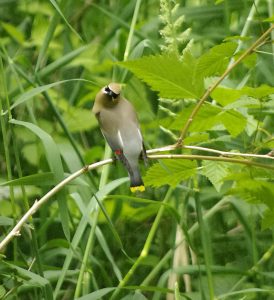
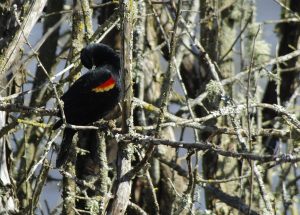 The refuge is walking only and there is a $3.00 parking fee unless you have a pass. Please, no pets allowed on the refuge. All are welcome to join me on my Wednesday morning walk that starts at 8:00 AM at the visitor center, or come on one of the weekend walks Spring through early Fall.
The refuge is walking only and there is a $3.00 parking fee unless you have a pass. Please, no pets allowed on the refuge. All are welcome to join me on my Wednesday morning walk that starts at 8:00 AM at the visitor center, or come on one of the weekend walks Spring through early Fall.
